The Ph(Double)D of Burlesque
An Interview with Dr. Lucky, also known as Dr. Lynn Sally
BY EMMALY WIEDERHOLT
Dr. Lucky, also known as Dr. Lynn Sally, is a performance studies scholar at New York University and an acclaimed burlesque artist who splits her time between New York City and southern New Mexico. Her recent book, Neo-Burlesque: Striptease as Transformation, offers an inside look at the history, culture, and philosophy of New York’s neo-burlesque scene. Here, Dr. Lucky shares what neo-burlesque is, why it’s important to study burlesque academically, and how her burlesque shows have moved with her to sunny New Mexico.
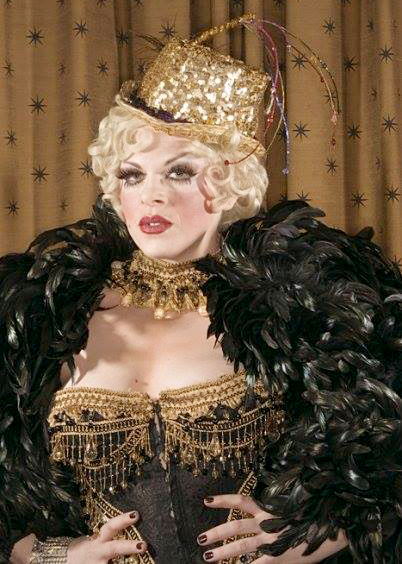
Photo by Lynette Astaire
~~
Can you tell me a little about your performance history and what shaped who you are as an artist today?
I was in graduate school when I started learning about burlesque. This was during the early burlesque revival in New York City. I very specifically remember feeling like it was a continuation of what I did at home. I know that sounds strange, but my friends and I would dress up in costumes, lashes, and wigs and perform for each other. In college, I started identifying as a female drag queen. I was attracted to the over-the-top aesthetic and larger-than-life sassy characters. I was also very influenced by Miss Piggy. All my influences came together very organically to create Dr. Lucky. I started performing in the scene. I was influenced by alternative performance art, people like Karen Finley, and drag. These things came together at a time in NYC when the downtown performing scene was blossoming with creativity and thinking outside the box by doing things that shocked and amazed audiences. That’s how I got started. Keep in mind, I was also studying performance studies at NYU, so these two worlds informed each other.
For those who might be unfamiliar, what is neo-burlesque?
The “neo” of burlesque marks not only that it is contemporary or new, but a revival. The revival part is important became all contemporary burlesque is neo burlesque. Neo burlesque tends to be people expressing themselves through short format work that is highly exaggerated theatricality and aesthetics. Neo burlesque usually uses striptease and double entendre to poke fun at what’s happening in society. That poking fun infects the spectators and describes the fun atmosphere that happens at a burlesque show. It’s basically a nightlife variety show that features short format performances.
I’m personally not interested in delineating the difference between commercial stripping and burlesque. The reason is there’s a lot of slut shaming of commercial strippers that leaks over into burlesque. I’m not interested in perpetuating that. I’ve also kept silent about my own participation in burlesque for two decades because I was afraid of getting fired. I’m tired of being silent and acting like it’s something reprehensible that must be kept behind closed doors. It’s innovative, interesting, and people have devoted a lot to the craft. A commercial stripper is generally hoping to connect to a patron for monetary exchange. A burlesque performer is connecting to an entire audience as a performing artist. I want to be careful of not being reductive though, because the burlesque dancers of the golden era in the 40s, 50s, and 60s were considered sex workers.
You wrote a book that came out earlier this year, Neo-Burlesque: Striptease as Transformation. What is it generally about?
I wrote a book proposal and sold the book before I started writing it. I was interested in thinking about burlesque as a new sexual revolution. The book is not a comprehensive history and it’s not encyclopedic. It’s comprised of seven case studies of seven performances I find compelling for different reasons. I think of it as documentation of the early neo burlesque time period and a love letter to each of the performers in it, whom I have had the pleasure of sharing stages with. I’m really happy that Rutgers University Press published it. It features a photo of Dirty Martini by Steven Menendez on the cover. It’s been exciting to see it in print.
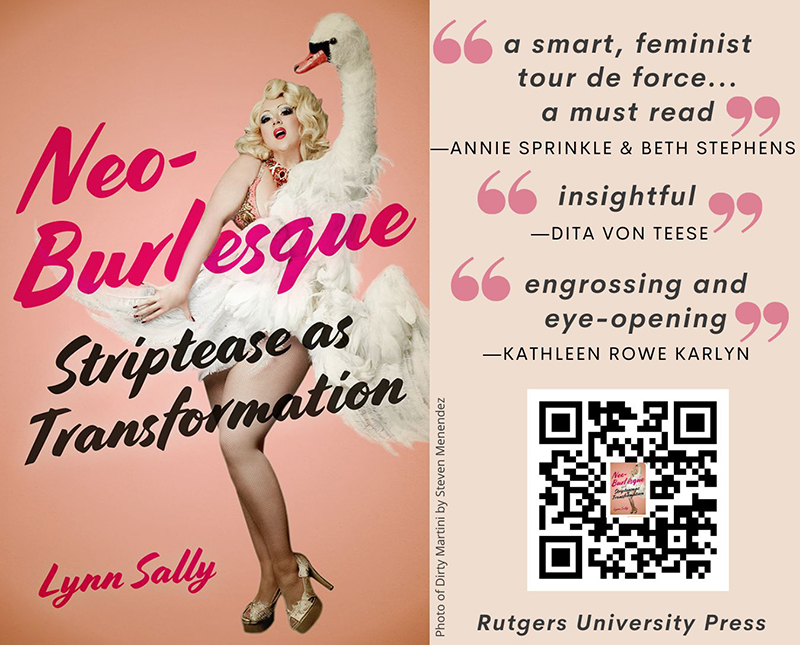
I understand you teach burlesque at NYU. What are some general themes you teach your students about burlesque?
I have been teaching burlesque at NYU for 18 years. I teach in the drama department, and it’s a performance studies class. When I walked into the classroom to teach my first class and looked around the room of beautiful young faces, I said, “Let’s do a show!” I didn’t think for a moment of the politics or optics of stripping for college credit. Over the years, I’ve gone back and forth on doing a show with the students. It’s always optional, but I have found that having students do the thing they are learning about concretizes the material. There would be no question if you were taking a juggling class that at some point you’d have to juggle. It’s the same with clowning, acting, or dancing.
There’s something transformative for students who might not be used to devised performance. By devised performance, I mean the individual is completely in charge of all components. The students start on day one by coming up with a stage name and coming up with concepts. Then they write, choreograph, and direct their own piece. That’s really liberating because in a traditional theater setting, all those roles are performed by professionals who do that one thing. But in burlesque the individual does it all.
My students at NYU always knew I did burlesque, but outside of NYU at other institutions I taught at I did not share that I did burlesque. One semester, a student sent me my website. This was a long time ago, and I would handle it differently now, but at the time I responded in a cowardly way and lied that it wasn’t me. I talk in the preface of my book about the stigma of burlesque and how burlesque performers have been fired from jobs. One woman lost custody of her kids. Even though burlesque is lighthearted, it can have serious repercussions. So I continuously left it off my CV.
Now I say both my real name and my performance name, and I’m proud that I’m at that point, but I had a crazy experience some years ago of a reporter refusing to publish an article about me because she didn’t believe I taught at NYU. I sent her a copy of my course description, and that wasn’t enough. I sent her my syllabus, and that wasn’t enough either. Finally, I had to send my paystub. This was beyond the ethics of reporting and was the disbelief that someone who is highly educated and teaching at the university level would choose to incorporate striptease into their personal and political agenda. These forced outings cause a lot of harm. I lived in a small town at the time. It would have been easy to find my house and who I was. There’s a reason why people use stage names.
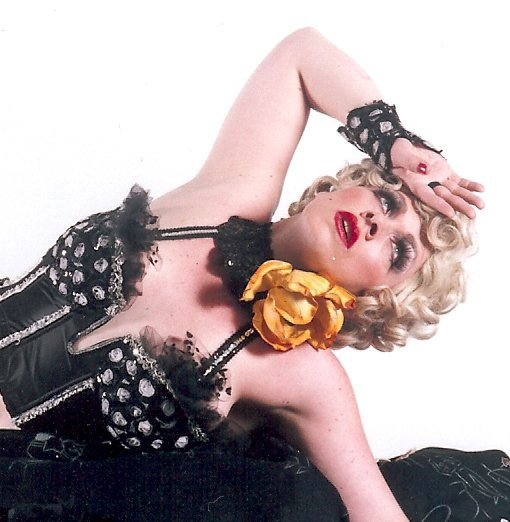
Photo by Dale Rio
Is it common for burlesque to be taught in academia, or is what you offer unique?
It definitely was unique when I first proposed the course 20 years ago. It was so unique that I couldn’t find any other institution that had a class on burlesque, though occasionally there would be a segment in a gender studies class or theater history class.
That has all changed. There has been a whole bunch of work done on burlesque: writing, oral history, costuming projects. Sherril Dodds is a professor at Boyer College who has written on burlesque. Jessica Thorpe, a.k.a Loretta Jean, at the University of Toronto teaches a class on burlesque. Professor Laurie Kurutz at Southern Oregon University has a course approved that uses my book as the foundation and as the title of the class. She also created “Voices of Oregon Burlesque” to collect oral histories of burlesque performers. There are other faculty who are teaching burlesque around the US and world. Burlesque has been a fringe art form that academia is about a decade behind on, but we’re starting to catch up.
Why is it important or relevant to study burlesque, either in a college setting or otherwise?
Burlesque has been left out of a lot of the histories. I argue in the history portion of my class that musical theater probably wouldn’t exist if not for burlesque. Vaudeville set itself up in opposition to burlesque. It had a huge impact on American popular culture and entertainment for 100 years. To ignore that because it’s synonymous with stripping in the contemporary imagination misses how important burlesque is to the performing arts and popular culture.
Because burlesque is oftentimes about the stripping body, the message or artistry can get lost. Sitting down and thinking critically about what you’re seeing has value. A lot of performers have something to say. Just like you’d go to a museum, consume the art, and think about what it means and how it makes you feel, I think we should do that with burlesque too, just like any other art form.
You’ve split your time between NYC and a small town in southern New Mexico called Truth or Consequences. Have you experienced different attitudes or reactions to burlesque in small-town New Mexico than in major metropolitan areas?
I wrote my book while travelling around the US in an RV. I took off in 2017, came to Truth or Consequences to soak for a week in the natural hot springs, stayed for a month, and then I had this idea to do a show in this town where I didn’t know anybody. That was an interesting experience as a producer, performer, and host to convince the locals that they wanted to see a burlesque show. I thought, “If I get run out of town, I can keep driving. If it works, maybe I can make a go for it here.”
Truth or Consequences is a small town with a lot of artists and creatives. It’s a really supportive community. I managed to do a couple of shows. The first one was incredibly successful; I booked the civic center and tons of people came. I brought in aerial and a masquerade ball. Everyone came and was dressed up. It was a wonderful moment when the local community of artists and creatives got to show up and have a great time.
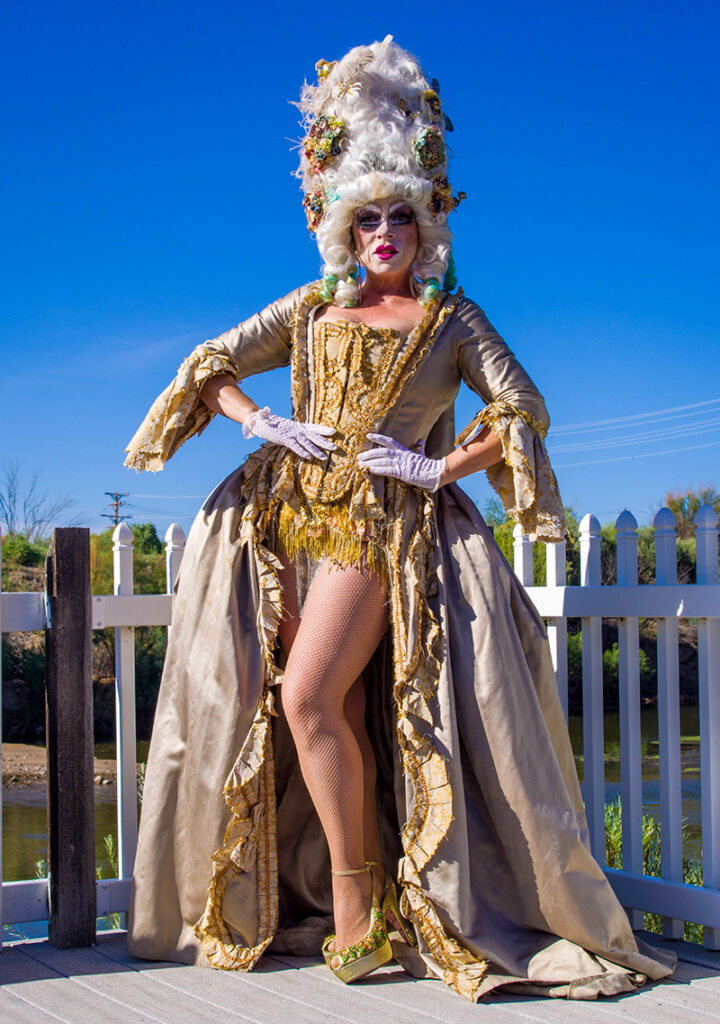
Photo by Chantal Elena Mitchel
Now I’m in Las Cruces, which is a mid-size city in southern New Mexico. I go back to Truth or Consequences every week, and I go back to NYC every summer. This year I’m also going back for a condensed three-week term at NYU in January. I get the best of all worlds.
Has your burlesque performance changed or been informed by New Mexico and its specific landscape and culture?
I’ve been thinking about making a very New Mexico act that has this spaghetti western narrative. The landscape is exceptional and inspiring in so many ways. In terms of the actual content, when I host a show I have to be a little careful of my language and my politics. I can be pretty explicit and political onstage, and I have to be careful in New Mexico. It’s very different than being in NYC. Of course, people here are sophisticated, but introducing people to burlesque is invigorating.
What’s next for you? Do you have a project or focus you’d like to share more about?
I am just starting my residency at Hotel Andaluz in Albuquerque. That’s starting in the fall and goes through the winter. I also had a show I booked out called First Friday Cabarets at Hotel Andaluz that got shut down because of COVID. I’m excited about bringing it back because it allows me to bring in other artists – both local and travelling. In addition, I’m looking to start producing in Las Cruces. One of the things I love about burlesque is we create our own opportunities. It’s akin to folk culture and much of dance, the idea of putting together a show and doing it for a community. There are a lot of people out there who want to have a good fun night out, and burlesque allows for that opportunity.
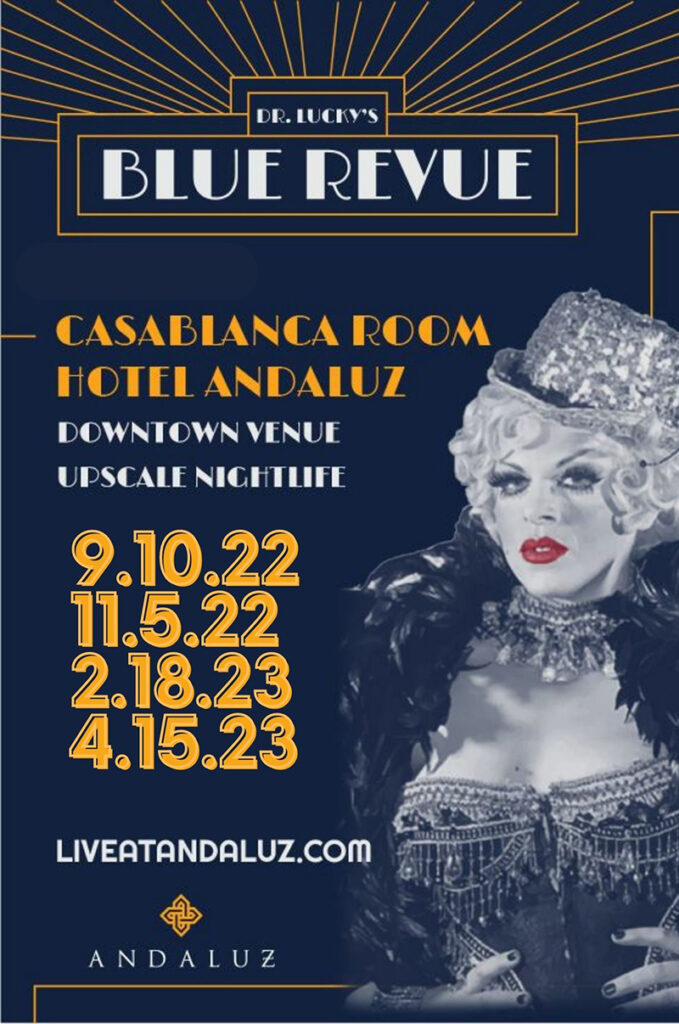
~~
To learn more, visit lynnsally.com.
